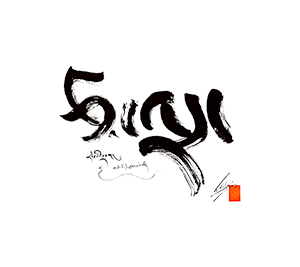Browse wiki
From Buddha-Nature
No +
<div class="d-flex align-items-center j … <div class="d-flex align-items-center justify-content-start position-relative text-article p-2 clearfix"></br> <div class="mr-3" style="width: 70px !important; height: 70px !important;">START_WIDGET"'-b26235096d606fccEND_WIDGET</div></br></br> <div>[[Harris, I.|Ian Harris]]</div>START_WIDGET"'-617806c0ca14f58eEND_WIDGET</br></br> </div>Harris, I.|Ian Harris]]</div>START_WIDGET"'-617806c0ca14f58eEND_WIDGET
</div> +
* <span> Preface</span><sp … </br>* <span> Preface</span><span>ix</span></br>* <span> Introduction</span><span>1</span></br>* <span> 1. A Preliminary Examination of Madhyamaka Ontology</span><span>7</span></br>* <span> 2. Nagarjuna and Logic</span><span>25</span></br>* <span> 3. Nagarjuna and the Continuity of Tradition</span><span>44</span></br>* <span> 4. The Problem of Mahayana "Schools"</span><span>63</span></br>* <span> 5. The Conception of Truth in Early Buddhism</span><span>84</span></br>* <span> 6. The Two Truths and the Three Natures</span><span>102</span></br>* <span> 7. The Nature of Reality</span><span>132</span></br>* <span> 8. The Problem of Idealism</span><span>152</span></br>* <span> Conclusion</span><span>176</span></br>* <span> Bibliography</span><span>180</span></br>* <span> Abbreviations</span><span>186</span></br>* <span> Index</span><span>187</span></br><span>132</span>
* <span> 8. The Problem of Idealism</span><span>152</span>
* <span> Conclusion</span><span>176</span>
* <span> Bibliography</span><span>180</span>
* <span> Abbreviations</span><span>186</span>
* <span> Index</span><span>187</span>
+
Academic +
true +
IV +
false +
Advanced +
Book +
The Continuity of Madhyamaka and Yogācāra in Indian Mahāyāna Buddhism +
Harris, Ian Charles. ''The Continuity of M … Harris, Ian Charles. ''The Continuity of Madhyamaka and Yogācāra in Indian Mahāyāna Buddhism''. Brill's Indological Library 6. Leiden: Brill, 1991. https://archive.org/details/madhyamakacontinuityofmadhyamkaandyogacharainindianbuddhismiancharlesharrisbrill_36_E/mode/2up.ddhismiancharlesharrisbrill_36_E/mode/2up. +
In the past European scholars have tended … In the past European scholars have tended to treat both Madhyamaka and Yogācāra as separate and fundamentally opposed trends in Mahāyāna Buddhist thought. Drawing heavily on early textual evidence this work questions the validity of such a 'Mahāyāna schools' hypothesis.<br></br> By down-playing the late commentorial traditions, the author attempts a general reappraisal of the epistemological and ontological writings of Nāgārjuna, Asaṅga and Vasubandhu. He concludes that the overlap in all areas of doctrine is significant, but particularly with respect to the teachings on the levels of truth, the enlightened and unenlightened states, the status of language and the nature of reality<br></br> It is hoped that such investigations may provide the basis for a new theory on the proliferation of Indian Mahāyāna Buddhism as an organic process of assimilation to new audiences, and specific contemporary problems, rather than in the more schismatic manner favoured by past researchers. (Source: [https://brill.com/view/title/720 Brill]) +
false +
Has parent pageThis property is a special property in this wiki.
Harris, Ian Charles. ''The Continuity of M … Harris, Ian Charles. ''The Continuity of Madhyamaka and Yogācāra in Indian Mahāyāna Buddhism''. Brill's Indological Library 6. Leiden: Brill, 1991. https://archive.org/details/madhyamakacontinuityofmadhyamkaandyogacharainindianbuddhismiancharlesharrisbrill_36_E/mode/2up.;The Continuity of Madhyamaka and Yogācāra in Indian Mahāyāna Buddhism;Two Truths;Madhyamaka;Yogācāra;Ian Charles Harris; The Continuity of Madhyamaka and Yogācāra in Indian Mahāyāna Buddhism Yogācāra in Indian Mahāyāna Buddhism +
false +
The Continuity of Madhyamaka and Yogācāra in Indian Mahāyāna Buddhism-front.jpg +
In the past European scholars have tended … In the past European scholars have tended to treat both Madhyamaka and Yogācāra as separate and fundamentally opposed trends in Mahāyāna Buddhist thought. Drawing heavily on early textual evidence this work questions the validity of such a 'Mahāyāna schools' hypothesis.<br></br> By down-playing the late commentorial traditions, the author attempts a general reappraisal of the epistemological and ontological writings of Nāgārjuna, Asaṅga and Vasubandhu. He concludes that the overlap in all areas of doctrine is significant, but particularly with respect to the teachings on the levels of truth, the enlightened and unenlightened states, the status of language and the nature of reality<br></br> It is hoped that such investigations may provide the basis for a new theory on the proliferation of Indian Mahāyāna Buddhism as an organic process of assimilation to new audiences, and specific contemporary problems, rather than in the more schismatic manner favoured by past researchers. (Source: [https://brill.com/view/title/720 Brill]) +
The Continuity of Madhyamaka and Yogācāra in Indian Mahāyāna Buddhism;The Continuity of Madhyamaka and Yogācāra in Indian Mahāyāna Buddhism;The Continuity of Madhyamaka and Yogācāra in Indian Mahāyāna Buddhism +
The Continuity of Madhyamaka and Yogācāra in Indian Mahāyāna Buddhism;The Continuity of Madhyamaka and Yogācāra in Indian Mahāyāna Buddhism;The Continuity of Madhyamaka and Yogācāra in Indian Mahāyāna Buddhism +
Creation date"Creation date" is a predefined property that corresponds to the date of the first revision of a subject and is provided by <a target="_blank" rel="nofollow noreferrer noopener" class="external text" href="https://www.semantic-mediawiki.org/wiki/Help:Special_properties">Semantic MediaWiki</a>.
17:18:25, 24 March 2020 +
Is a new page"Is a new page" is a predefined property that indicates whether a subject is new or not and is provided by <a target="_blank" rel="nofollow noreferrer noopener" class="external text" href="https://www.semantic-mediawiki.org/wiki/Help:Special_properties">Semantic MediaWiki</a>.
true +
Last editor is"Last editor is" is a predefined property that contains the page name of the user who created the last revision and is provided by <a target="_blank" rel="nofollow noreferrer noopener" class="external text" href="https://www.semantic-mediawiki.org/wiki/Help:Special_properties">Semantic MediaWiki</a>.
Modification date"Modification date" is a predefined property that corresponds to the date of the last modification of a subject and is provided by <a target="_blank" rel="nofollow noreferrer noopener" class="external text" href="https://www.semantic-mediawiki.org/wiki/Help:Special_properties">Semantic MediaWiki</a>.
17:18:25, 24 March 2020 +
Has query"Has query" is a predefined property that represents meta information (in form of a <a target="_blank" rel="nofollow noreferrer noopener" class="external text" href="https://www.semantic-mediawiki.org/wiki/Subobject">subobject</a>) about individual queries and is provided by <a target="_blank" rel="nofollow noreferrer noopener" class="external text" href="https://www.semantic-mediawiki.org/wiki/Help:Special_properties">Semantic MediaWiki</a>.
Books/The Continuity of Madhyamaka and Yogācāra in Indian Mahāyāna Buddhism +, Books/The Continuity of Madhyamaka and Yogācāra in Indian Mahāyāna Buddhism +, Books/The Continuity of Madhyamaka and Yogācāra in Indian Mahāyāna Buddhism +, Books/The Continuity of Madhyamaka and Yogācāra in Indian Mahāyāna Buddhism + and Books/The Continuity of Madhyamaka and Yogācāra in Indian Mahāyāna Buddhism +
Has subobject"Has subobject" is a predefined property representing a <a target="_blank" rel="nofollow noreferrer noopener" class="external text" href="https://www.semantic-mediawiki.org/wiki/Help:Container">container</a> construct and is provided by <a target="_blank" rel="nofollow noreferrer noopener" class="external text" href="https://www.semantic-mediawiki.org/wiki/Help:Special_properties">Semantic MediaWiki</a>.
